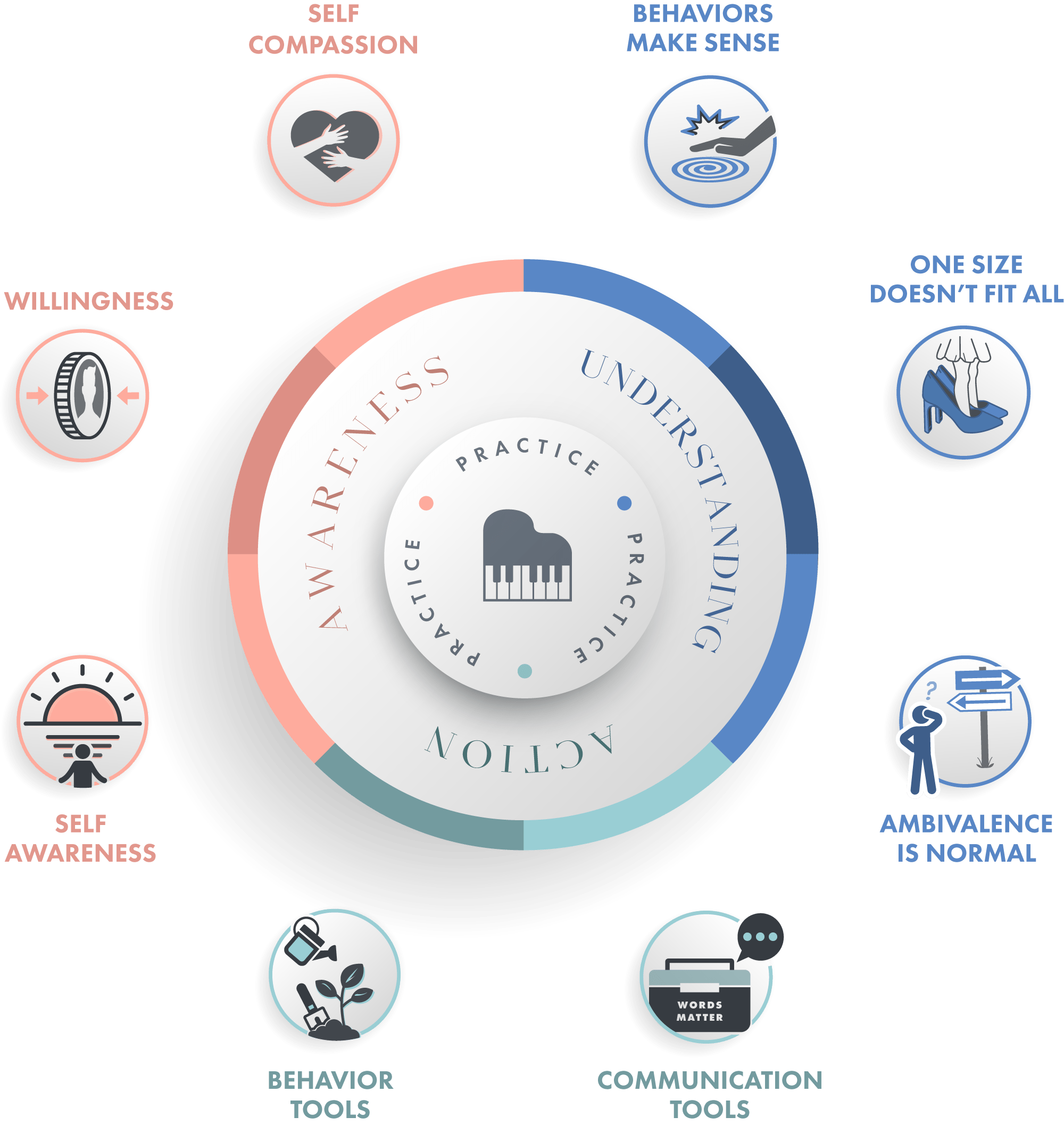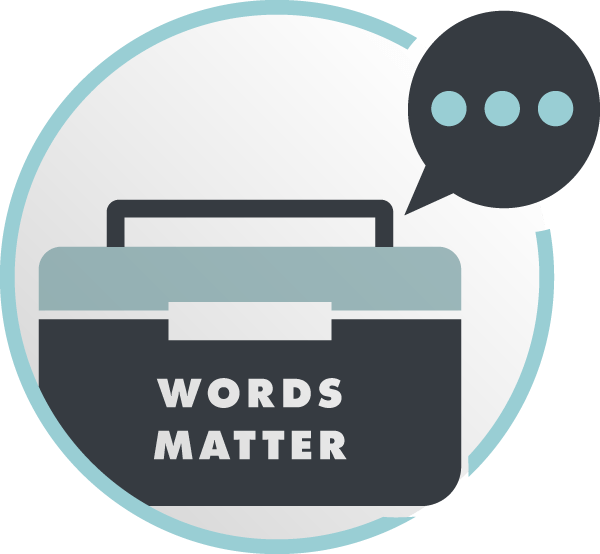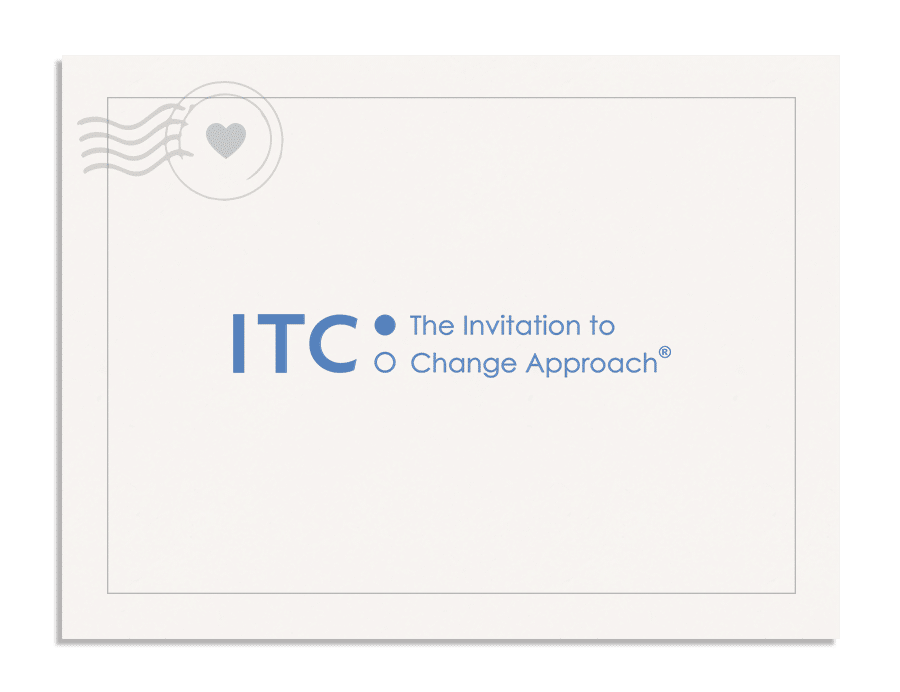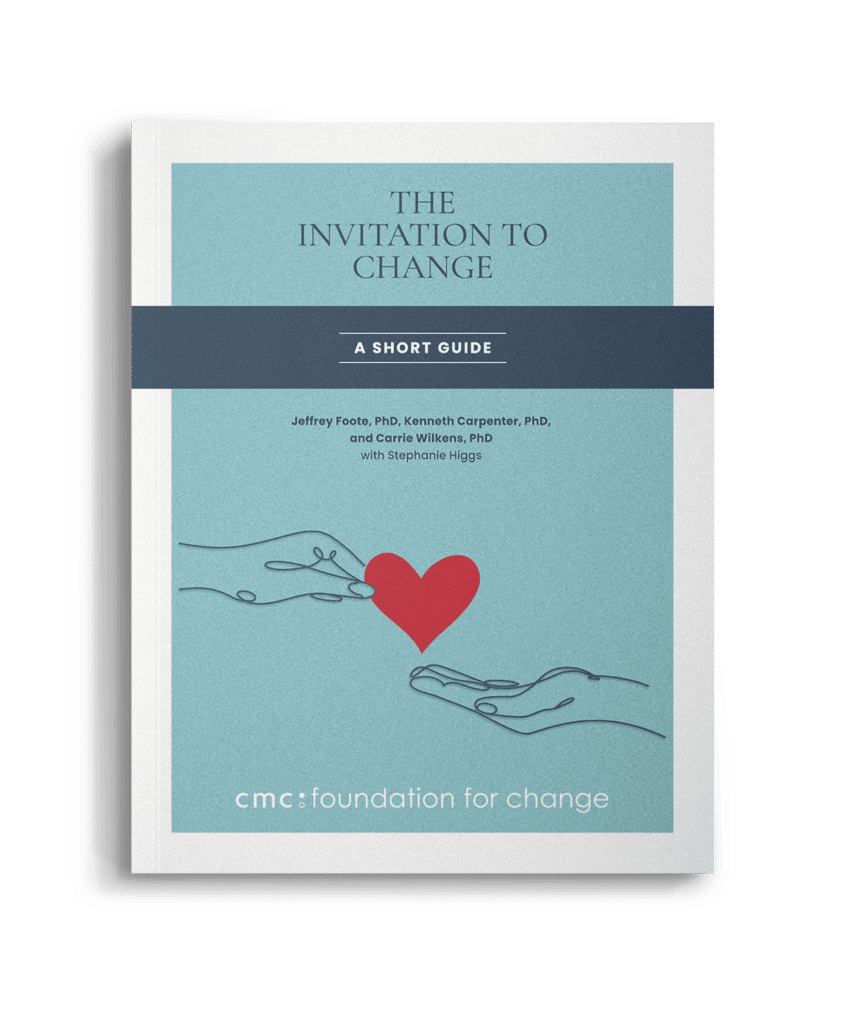Invitation to Change
The Invitation to Change Approach (ITC) is a holistic helping framework based in science and kindness, designed for the families and loved ones of people struggling with substance use, as well as the professionals who support them.
Our trainings and materials invite you to reflect on what it means to help, reimagine the role that loved ones can play in the change process, and learn evidence-supported strategies for helping.
*For professionals: below, you can see how we talk about the ITC with families and loved ones. Please note, however, that the ITC is a broadly applicable change model which can be utilized in group, family and individual work. We have written and digital material that you can use in your work with family members and anyone else wanting to help someone struggling with substances.
What is The Invitation to Change?
Interactive
ITC Wheel


Behaviors Make Sense
Open the door to change by viewing your loved one’s substance use through a new lens.

One Size Doesn't Fit All
The path to change is different for everybody - there is no one ‘right’ way to help!

Ambivalence is Normal
It’s normal for new behaviors to compete with the old, even as you move toward change.

Communication Tools
Collaborative communication is key to supporting change in your loved one.

Behavior Tools
Grow positive behaviors and reduce negative ones with evidence-based strategies.

Self Awareness
What are your values and emotions? How can you bring them into the process of change?

Willingness
Move toward what is important while accepting the difficult feelings that come with change.

Self Compassion
Take care of yourself! Acknowledge your needs throughout this process.
Practice, Practice, Practice
Change won’t happen in a day - it takes time, and effort, and practice!
Helping with Understanding
When dealing with your loved one’s substance use, have you ever thought they were selfish, uncaring, morally bankrupt, or crazy? Have their actions frightened, angered, or confused you? Or all of the above? Have you ever thought, “Why on earth would they do this?” Or, “How could they do this to me?” What else have you thought?
All of these are normal reactions to have, given the impact substance use has probably had on your loved one and your family. Unfortunately, these thoughts may have made it harder to help your loved one. How you understand your loved one’s behavior matters a lot, and the Helping with Understanding section will give you a new way to think about the problem—one that allows a lot more room for positive change!

Behaviors Make Sense
First, even though you can’t see it now, your loved one’s behaviors make sense in some way. People use substances because they get something out of it that’s important to them. It’s not because they’re “crazy” or “bad”—it’s because the behavior is serving a purpose. That is what keeps them going back, even as the costs pile up. While you don’t have to agree with or like their reasons for using, understanding those reasons will help you be more effective in helping promote change.

One Size Does Not Fit All
Second, one size does not fit all. Your loved one has very specific reasons why their behavior makes sense to them, and their reasons are different from the next person’s. There are also many paths to change. Understanding that one size does not fit all will help your loved one find a way to change that works for them, and help you find what you need as well.

Ambivalence is Normal
Lastly, ambivalence is normal. Since your loved one’s substance use makes sense to them in some way, when they try to give up those behaviors they will naturally feel ambivalent and sometimes go back to those old ways. Change is an ongoing process, and how you respond to ambivalence can help move things along or set things back.
Helping with Awareness

Self-Awareness
Your self-awareness, which includes awareness of your thoughts, feelings, body sensations, and reactions, along with connection to your values, will matter a lot as you try to use the skills in the ITC. With self-awareness, you can see that your values and your pain are two sides of the same coin, and you can learn to work with both (i.e., picking up the whole coin).

Willingness
Next, since helping is not a pain-free process, the willingness section will help you find ways to accept this struggle instead of shutting down, withdrawing, or getting angry. Willingness will help you allow for the vulnerability that comes with caring.

Self-Compassion
Last, the ITC will help you bring self-compassion to your pain and the change process. Improved self-compassion will help move away from self-blame and shame and tend to yourself better. This way, you can bring kindness and care to the learning (and stumbling) that comes with making changes in behavior, for your loved one and yourself. Plus, taking care of yourself will invite your loved one to do the same.
Helping with Action
This section has two parts: communication tools, or how we talk, and behavior tools, or how we act as we try to help.

Communication Skills
First, how we talk can be the difference between starting the change process and stalling out. When things are rough, it’s normal to want to yell, lecture, or shut down—but it’s not likely that anything positive will come from these interactions. By learning communication skills you can speak with your loved one (and everyone else!) in collaborative ways that open them up to the possibility of changing, and that increase the connection between you instead of creating distance.

Behavior Tools
How we act also matters for encouraging behaviors we want and discouraging ones we don’t want. In the behavior tools section, you will learn that recognizing and rewarding positive change invites it to happen more, while allowing naturally occurring consequences and setting respectful limits makes negative behavior less likely to happen.
Practice

Practice, Practice, Practice
Finally, at the center of the wheel is practice, practice, practice, because behavior changes when you change behaviors. Have you ever tried something new, like learning another language, trying a sport, playing an instrument, or swimming? How well did you do that first time? Since new behavior can’t happen without learning and practice, we’re betting that the first time was kind of awkward and clumsy. As you learn the strategies in the ITC, we encourage you to approach them like any new behavior and give yourself room to make mistakes and keep learning. We will encourage you to practice with people in your life and to notice how hard it is to change your own behaviors. We also hope you will start to see that your loved one needs the same time and space to practice making changes and that they will benefit from your patience and compassion.
Welcome to an Invitation to Change.



